After the fall of the Roman Empire, a host of invaders flocked across southern Italy, establishing some of the most charming villages in Calabria. This period in our history is called “the Middle Ages,” and the towns they created along the way-Medieval villages-are everywhere in Calabria.
Travelers and expats alike are mesmerized by these towns, monuments of Calabria’s tormented past whose varied architecture represents the changing times.
If you are planning on visiting Calabria, here is a quick rundown on some of the most popular medieval villages in the region.
1. Gerace (RC)
Gerace is to medieval villages what Rome is roman ruins … in other words, it is the bomb diggity of cool mountain villages.
Located in the Aspromonte mountains in the province of Reggio Calabria, Gerace is considered to be the best preserved medieval village in Italy. The Assunta Cathedral, built in 1045, is the largest religious structure in Calabria and features cylindrical apses, arches and three naves. Other interesting sites in the village include the Norman Castle, the Byzantine Church of San Giovannello and the San Francesco Convent and Church.
2. Stilo (RC)
Stilo is a small mountain village just 30 miles north of Gerace at the foot of Mount Consolino and is home to one of Calabria’s most beloved icons, La Cattolica.
Stilo was one of the most important Byzantine centers in Calabria and housed Basilian monks and hermits who fled from persecution in the 10th Century. The five-domed church, La Cattolica, is the main attraction, but the Gothic-Swabian Duomo, Church of San Francesco and the Convent Church of San Domenico are also worth a look.
3. Monasterace (RC)
Ruins of a Byzantine castle are the focal point of this tiny village that overlooks the Ionian coast in the province of Reggio Calabria.
In addition to the castle that once housed the royal Caracciolo, Conclubet and Monaco families, visitors can visit the S. Croce Parochial and see a canvas that dates back to the early 700s or visit the remains of a Greek hill at nearby Kaulonia.
4. Pentidattilo (RC)
Pentidattilo, or five fingers, is not only a interesting village because of the Medieval churches and countryside views, but because of its formidable history that lead the city to be named one of Italy’s Città Morte.
The five fingers of Pentidattilo loom above the village, an ominous reminder of the decades of earthquake destruction and mandatory evacuations that cleared the village, as well as of the notorious Alberti family Massacre on Easter, 1686.
Interesting things to see include The Church of Saint Peter and Paul with its massive bell tower, numerous statues and the tomb of Don Giuseppe Alberti and the Chiesa della Candelora.
5. Santa Severina (KR)
Santa Severina hangs on a rock-filled ledge in the province of Crotone overlooking the Neto River valley.
The town is a testament to the groups who conquered this part of Italy and many of the architectural elements of the medieval times remain. The 11th Century Norman Castle overpowers the Byzantine ruins on which it was built and is referred to as “the stone ship,” for the strong walls that guard the castle’s entrance. The Baptistery, a circular building with four appendages with 10th and 11th Century frescos is the only Byzantine baptistery in Calabria still intact.
6. Cutro (KR)
Cutro is not only interesting for its Medieval city center and abandoned tower that dates back to the early 400s, but it is also well-known for its bread-pane di Cutro-that is made with durum wheat and has a signature thick crust.
A visit to the city should include a stop in a local bakery, as well as the Monachelle Church, with its Renaissance portal, the Santa Maria della Pietà Church and the Frati Minori Convent with its bell tower and 17th Century wooden crucifix.
Was your favorite medieval village left off of the list? Come back next week to see my pick of villages from the provinces of Catanzaro, Cosenza and Vibo Valentia.
(Photo credits: Comune di Stilo, Italiaabc, Natura Mediterranea, Wikipedia, Foto Community, Panoramio, Wikipedia)
Traveling to southern Italy? Click here to see how I can help with your Calabria travel plans.


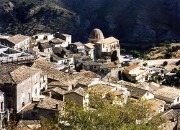
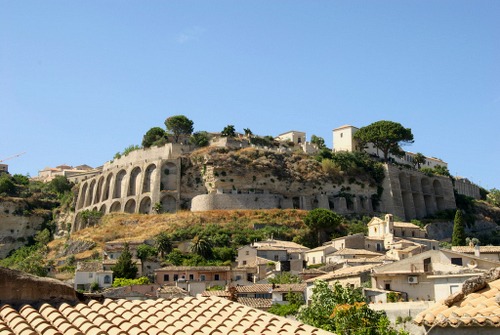
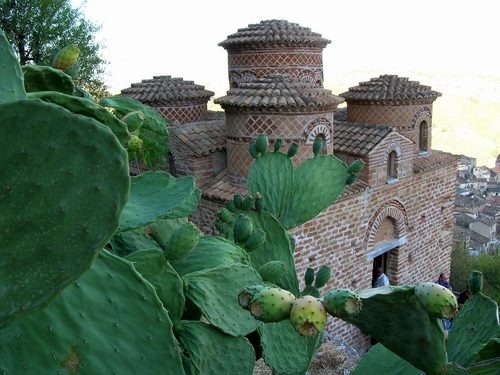
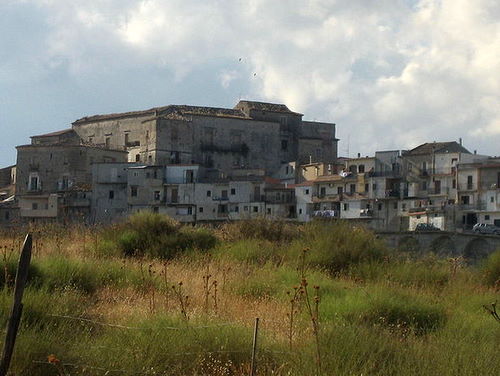
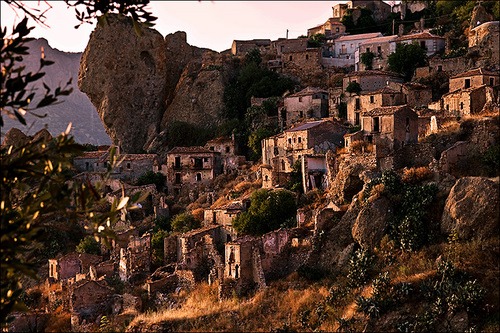
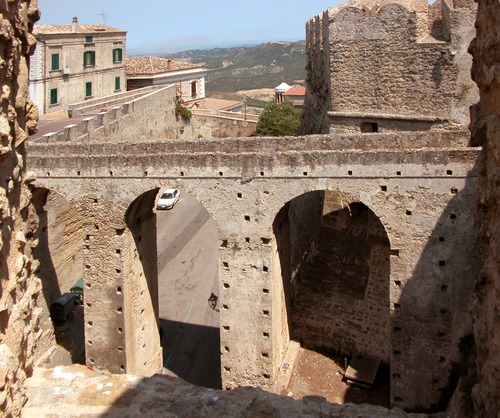


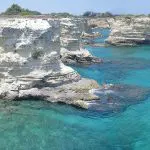
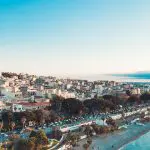

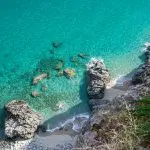
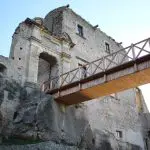
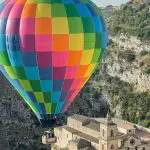
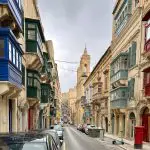
Great job, Cherrye. I have seen Gerace and hope to visit at least one other of these places before I leave Italy.
Does that mean you are coming back down south? Yea!
Even better, you can hit Gerace, Stilo, and Monasterace easily in one day! Gerace is the most touristy, so you’ll want to hit that while things are open (i.e., don’t show up between 1-4), but if you can visit Stilo during its Palio in the summer do it! Molto cool 🙂 Reminds me, I don’t think I ever wrote about it or posted photos…hmm….
Definitely. You can also see Gerace and the ruins in Locri in one go, too.
.-= Michelle | Bleeding Espresso´s last blog ..A Fresco Painter’s Love Letter to Calabria =-.
This is great! I’m definitely bookmarking this page; it’ll come in handy when I finally do get to Calabria.
Grazie. Hope you can get here soon!
This is fantastic!! 🙂 I now have even MORE places to see in Calabria.
Yea, Lulu! Come see them (and me) soon.
.-= LuLu´s last blog ..Italian Fashion: Pinko =-.
These are lovely medieval towns!Gerace and Stilo are my top faves. Thanks for sharing.
You are welcome! Thanks for stopping by.
This is a great post Cherrye and these are some wonderful suggestions.
Off to book my flight over now ciao ciao
Woo hoo. Hope we can meet up this time!
.-= travelingsuep´s last blog ..Kidnapped aka Out of Control =-.
La Cattolica looks breathtaking. Need to get down there 🙂
Yes, you do, Michael!
.-= Michael @ Culture Discovery´s last blog ..Welcome To Italy… There’s a Tax For That =-.
Two years ago we visited Gerace too and it was so unique and gorgeous. Is Caulonia the same town as Kaulonia? We visited Caulonia in the mountains as that’s where my maternal grandfather grew up. I’m so excited because, after 4 years of researching and gathering documents, the application for dual citizenship with Italy, for my two children and I was finally accepted!
Auguri!!!
.-= Lenora´s last blog ..Italy Travel, Cinque Terre, September =-.
Hello Cherrye,
Stop by
http://www.carmeloorlando.blogspot.com/
to pick up your award!
Hope all is well and hope I will make it to Calabria again soon and Catanzaro will definitely be in the itinerary!
Jennifer
Awesome. Thanks, Jennifer.
.-= Jennifer´s last blog ..I’m Ancestor Approved =-.
Thanks for this post Cherrye – have not been to any of these towns and they look like must-sees for my next trip!!
Definitely! I hope you make it down here soon.
.-= MadelineJ´s last blog ..A magical abbey outside Turin: Sacra di San Michele =-.
Fabulous article, Cherrye! Love that church in Stilo. Gorgeous!!
Thanks, Laura!
Beautiful write up and great photos! The town I live in is all about the Roman ruins; I could stand to take in some Medieval culture for a change. Gerace looks gorgeous!
Oh yes, do come! 🙂
Sigh. Sigh sigh *sigh*. Oh, I’d be in a fog of joy in such places…
So these are living, working villages? Are there any protection orders on buildings, as with Britain’s Listing system? (http://www.english-heritage.org.uk/caring/listing/listed-buildings/) And have you seen Italian archaeologists at work anywhere?
Having said that, I’ve just read a NatGeo article on the work being done underneath Rome, and that blew my mind, the fact that so much of it was still, *still* untouched. So I guess Italian archaeologist might have a lot on their plates right now. 🙂
Great article, reading articles like this is what I need sometimes to get my own writing juices going again. Just sometimes it is so difficult to do all the research for an article like this and it is so easy to get lazy. Is also great to learn more about one of the places I plan on going to next time I get to Italy. Mark
I visited multiple websites but the audio quality for audio songs
present at this web page is actually fabulous.
Feel free to surf to my web site Spousal Visa
It’s wonderful that you are getting thoughts from this post as well as from our discussion made
at this time.